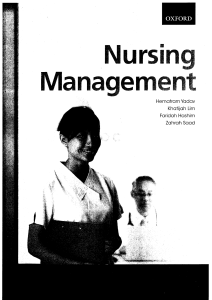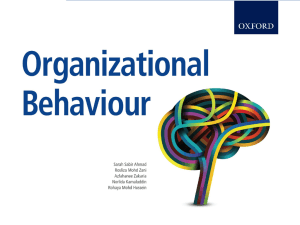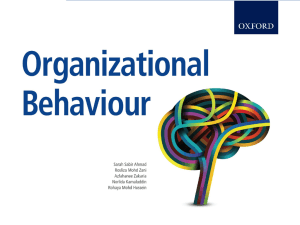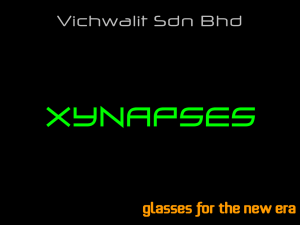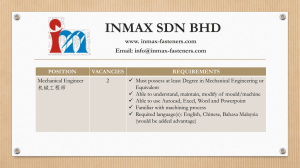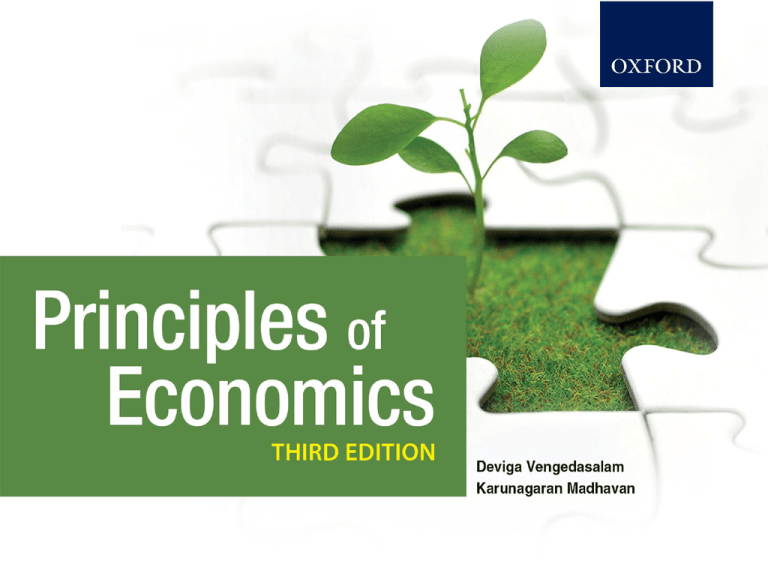
PRINCIPLES OF ECONOMICS Third Edition
© Oxford Fajar Sdn. Bhd. (008974-T), 2013
All Rights Reserved
1– 1
CHAPTER
1
INTRODUCTION TO
MICROECONOMICS
PRINCIPLES OF ECONOMICS Third Edition
© Oxford Fajar Sdn. Bhd. (008974-T), 2013
All Rights Reserved
1– 2
DEFINITION OF ECONOMICS
Economics is a science which studies human
behaviours as a relationship between ends
and scarce which have alternative uses.
OR
Economics is a study of how people use their
limited resources to try to fulfil unlimited
wants and involves alternatives or choices.
PRINCIPLES OF ECONOMICS Third Edition
© Oxford Fajar Sdn. Bhd. (008974-T), 2013
All Rights Reserved
1– 3
MICROECONOMICS
VS. MACROECONOMICS
MICROECONOMICS
MACROECONOMICS
The study of
individual parts of the
economy, such as
public choices,
business choices and
personal choices.
The study of the
economic system as
a whole, such as
national income,
trade cycle,
unemployment rate,
inflation and general
price level.
PRINCIPLES OF ECONOMICS Third Edition
© Oxford Fajar Sdn. Bhd. (008974-T), 2013
All Rights Reserved
1– 4
POSITIVE VS. NORMATIVE
ANALYSIS
A positive analysis is to deal with the question
of “what is” and no indication of approval or
disapproval. It focuses on facts and cause-andeffect relationships.
A normative analysis is to deal with the
question of “what ought to be”. It incorporates
value judgements about what the economy
should be or what policy should be used to
achieve economic goals.
PRINCIPLES OF ECONOMICS Third Edition
© Oxford Fajar Sdn. Bhd. (008974-T), 2013
All Rights Reserved
1– 5
SCARCITY
CHOICE
BASIC ECONOMIC
CONCEPTS
OPPORTUNITY COST
PRINCIPLES OF ECONOMICS Third Edition
© Oxford Fajar Sdn. Bhd. (008974-T), 2013
All Rights Reserved
1– 6
BASIC ECONOMIC CONCEPTS
SCARCITY
– One of the important concepts in economics is
scarcity.
– Scarcity is defined as wants always exceed limited
resources to satisfy them.
– Scarcity is a universal problem faced by poor as well
as rich nations in order to fulfil their needs.
PRINCIPLES OF ECONOMICS Third Edition
© Oxford Fajar Sdn. Bhd. (008974-T), 2013
All Rights Reserved
1– 7
BASIC ECONOMIC CONCEPTS
(cont.)
CHOICE
– When scarcity exists, choices are to be made.
OPPORTUNITY COST
– Opportunity cost is defined as the second best
alternative that has to be forgone for another choice
which gives more satisfaction.
PRINCIPLES OF ECONOMICS Third Edition
© Oxford Fajar Sdn. Bhd. (008974-T), 2013
All Rights Reserved
1– 8
BASIC ECONOMIC PROBLEMS
1. WHAT TO PRODUCE?
Refers to the type of goods and services to be produced
2. HOW TO PRODUCE?
Refers to the cheapest method of production
3. FOR WHOM TO PRODUCE?
Refers to the distribution of income
PRINCIPLES OF ECONOMICS Third Edition
© Oxford Fajar Sdn. Bhd. (008974-T), 2013
All Rights Reserved
1– 9
PRODUCTION POSSIBILITIES
CURVE (PPC)
Used to explain the basic economic concepts:
Scarcity, Choices and Opportunity cost.
DEFINITION:
The PPC shows the various possible
combinations of goods and services
produced within a specified time period
with all its resources fully and
efficiently employed.
PRINCIPLES OF ECONOMICS Third Edition
© Oxford Fajar Sdn. Bhd. (008974-T), 2013
All Rights Reserved
1– 10
PRODUCTION POSSIBILITIES
CURVE (PPC) (cont.)
Assumptions:
1.
The economy is operating in full employment
and full production capacity (full efficiency).
2.
The amount of resources available are fixed.
3.
The state of technology does not change
throughout the production.
PRINCIPLES OF ECONOMICS Third Edition
© Oxford Fajar Sdn. Bhd. (008974-T), 2013
All Rights Reserved
1– 11
PRODUCTION POSSIBILITIES
CURVE (PPC) (cont.)
Sewing Machine
16
If it allocates all its resources to sewing machine, it
will produce at Point A.
A
If it allocates all its resources to butter, it will
produce at Point F.
14
The country Jaya, produces two products –
butter and sewing machine.
C
12
10
If the country Jaya is at Point C
on the PPC, it can produce the
combination of 2,000 kg butter
and 12,000 units of sewing
machine.
D
8
6
Point D shows the production of
3,000 kg butter and 9,000 units
of sewing machine.
4
2
0
F
1
2
PRINCIPLES OF ECONOMICS Third Edition
© Oxford Fajar Sdn. Bhd. (008974-T), 2013
3
4
5
Butter
All Rights Reserved
1– 12
PRODUCTION POSSIBILITIES
CURVE (PPC) (cont.)
Sewing Machine
16
14
12
A
Z
B
Y
C
10
8
6
4
2
0
Point outside the PPC
(Point Z) SCARCITY
UNATTAINABLE
Any point along the PPC
CHOICES
D
Movement from one point
to another (point C to D)
OPPORTUNITY COST
ATTAINABLE
Point inside the PPC
(Point Y) Waste
of resources and
inefficiency
E
F
1
2
PRINCIPLES OF ECONOMICS Third Edition
© Oxford Fajar Sdn. Bhd. (008974-T), 2013
3
4
5
Butter
All Rights Reserved
1– 13
FACTORS THAT INFLUENCE
THE SHIFT OF PPC
Sewing Machine
1. Economic
Growth
16
When the country
enjoys economic
growth, the PPC
bounds outward.
14
12
10
8
6
4
2
0
When the country
is struck by natural
disasters, economic
growth will decline
and the PPC will
shift to the left.
1
PRINCIPLES OF ECONOMICS Third Edition
© Oxford Fajar Sdn. Bhd. (008974-T), 2013
2
3
4
5
Butter
All Rights Reserved
1– 14
FACTORS THAT INFLUENCE
THE SHIFT OF PPC (cont.)
Sewing Machine
2. Improvements
in Technology 16
Technology increases the
production of sewing machine.
14
12
Technology increases the
production of butter.
10
8
6
4
2
0
1
PRINCIPLES OF ECONOMICS Third Edition
© Oxford Fajar Sdn. Bhd. (008974-T), 2013
2
3
4
5
Butter
All Rights Reserved
1– 15
FACTORS THAT INFLUENCE
THE SHIFT OF PPC (cont.)
Sewing Machine
3. Population
16
14
Increase in
population
12
10
8
6
Decrease in
population
4
2
0
1
PRINCIPLES OF ECONOMICS Third Edition
© Oxford Fajar Sdn. Bhd. (008974-T), 2013
2
3
4
5
Butter
All Rights Reserved
1– 16
SHAPE OF PPC
Sewing Machine
PPC IS CONCAVE
16
14
Increasing Opportunity Cost
12
10
8
6
4
2
0
1
PRINCIPLES OF ECONOMICS Third Edition
© Oxford Fajar Sdn. Bhd. (008974-T), 2013
2
3
4
5
Butter
All Rights Reserved
1– 17
SHAPE OF PPC (cont.)
Sewing Machine
16
PPC IS CONVEX
14
12
Decreasing Opportunity Cost
10
8
6
4
2
0
1
PRINCIPLES OF ECONOMICS Third Edition
© Oxford Fajar Sdn. Bhd. (008974-T), 2013
2
3
4
5
Butter
All Rights Reserved
1– 18
SHAPE OF PPC (cont.)
Sewing Machine
16
PPC IS LINEAR
14
12
Constant Opportunity Cost
10
8
6
4
2
0
1
PRINCIPLES OF ECONOMICS Third Edition
© Oxford Fajar Sdn. Bhd. (008974-T), 2013
2
3
4
5
Butter
All Rights Reserved
1– 19
ECONOMIC SYSTEM
TYPES OF ECONOMIC SYSTEM
MIXED
ECONOMY
SOCIALISM
PRINCIPLES OF ECONOMICS Third Edition
© Oxford Fajar Sdn. Bhd. (008974-T), 2013
CAPITALISM
ISLAMIC
ECONOMY
All Rights Reserved
1– 20
CHARACTERISTICS
CAPITALISM
An economic system where individuals and sellers
make economic decisions using a price system
MERITS AND DEMERITS
PRINCIPLES OF ECONOMICS Third Edition
© Oxford Fajar Sdn. Bhd. (008974-T), 2013
All Rights Reserved
1– 21
CHARACTERISTICS
Private ownership of resources
Freedom of enterprise and choice
Consumers’ sovereignty
Competition
Government intervention
Price system
PRINCIPLES OF ECONOMICS Third Edition
© Oxford Fajar Sdn. Bhd. (008974-T), 2013
All Rights Reserved
1– 22
DEMERITS
MERITS
Production according to
consumers’ needs
Economic freedom
Efficient utilization of
resources
Variety of consumer goods
Enhanced trade, business
and R&D
Automatic incentives
Flexibility
PRINCIPLES OF ECONOMICS Third Edition
© Oxford Fajar Sdn. Bhd. (008974-T), 2013
Inequality of distribution
of wealth and income
Inflation and high
unemployment rate
Lack of social welfare
Wasteful competition
Misallocation of
resources
Social cost
All Rights Reserved
1– 23
CHARACTERISTICS
SOCIALISM
An economic system where all the economic decisions
are made by the government or a central authority
MERITS AND DEMERITS
PRINCIPLES OF ECONOMICS Third Edition
© Oxford Fajar Sdn. Bhd. (008974-T), 2013
All Rights Reserved
1– 24
CHARACTERISTICS
Public ownership of resources
Central planning authority
Price mechanism of lesser importance
Central control and ownership
PRINCIPLES OF ECONOMICS Third Edition
© Oxford Fajar Sdn. Bhd. (008974-T), 2013
All Rights Reserved
1– 25
DEMERITS
MERITS
Production according to
basic need
Equal distribution of
income and wealth
Better allocation of
resources
No serious unemployment
or inflation
Rapid economic
development
Social welfare
PRINCIPLES OF ECONOMICS Third Edition
© Oxford Fajar Sdn. Bhd. (008974-T), 2013
Lack of incentives and
initiative by individuals
Loss of economic
freedom and consumer
sovereignty
Absence of competition
Waste of economic
resources
All Rights Reserved
1– 26
CHARACTERISTICS
ISLAMIC ECONOMY
An economic system which combines both capitalism
and socialism and follows the principles of Syariah
PRINCIPLES OF ECONOMICS Third Edition
© Oxford Fajar Sdn. Bhd. (008974-T), 2013
All Rights Reserved
1– 27
CHARACTERISTICS
Public and private ownership of resources
owned by God
Price mechanism and limited government
intervention
Distribution of wealth
Prohibition of interest
Freedom of economic enterprise
PRINCIPLES OF ECONOMICS Third Edition
© Oxford Fajar Sdn. Bhd. (008974-T), 2013
All Rights Reserved
1– 28

